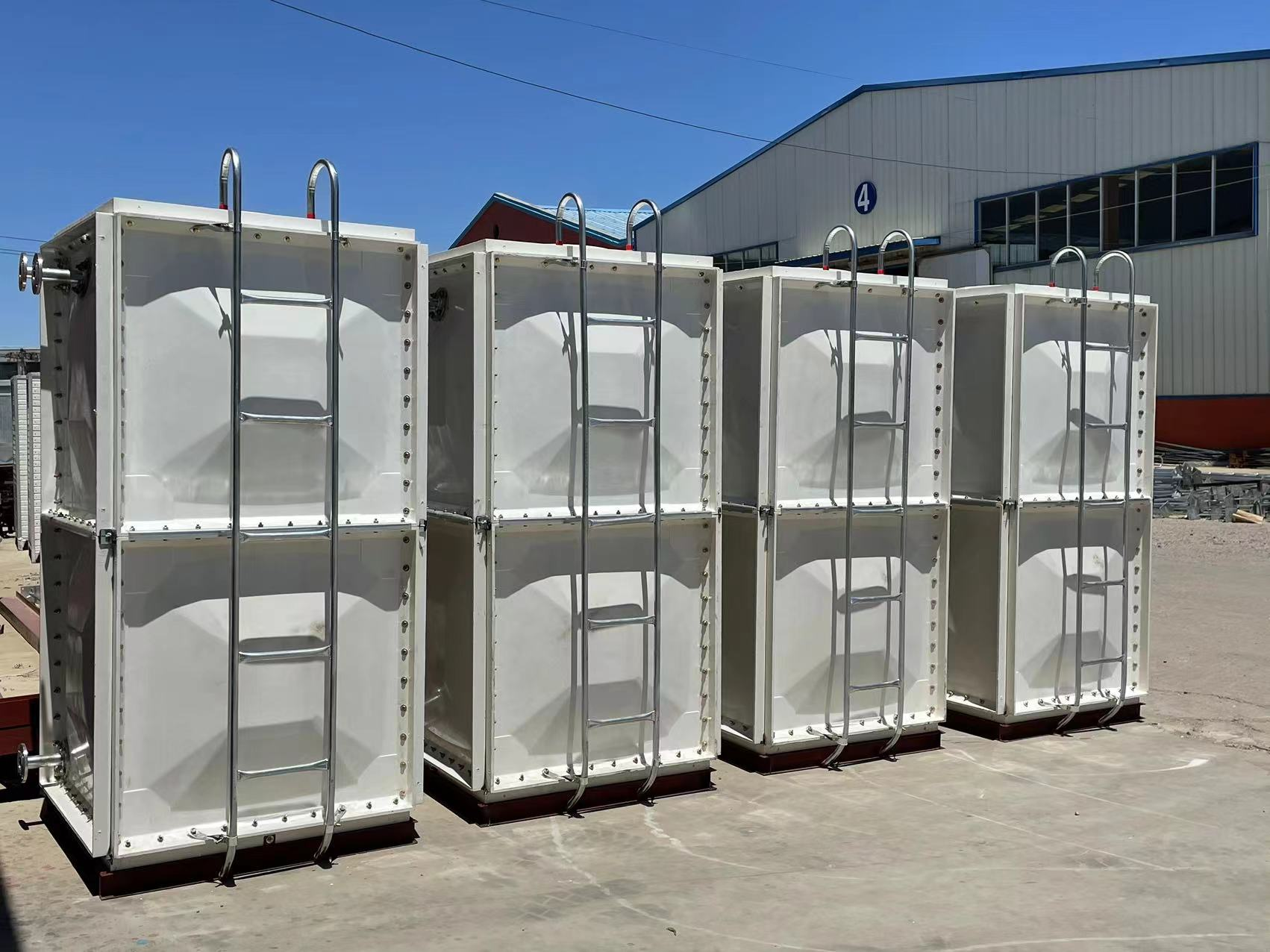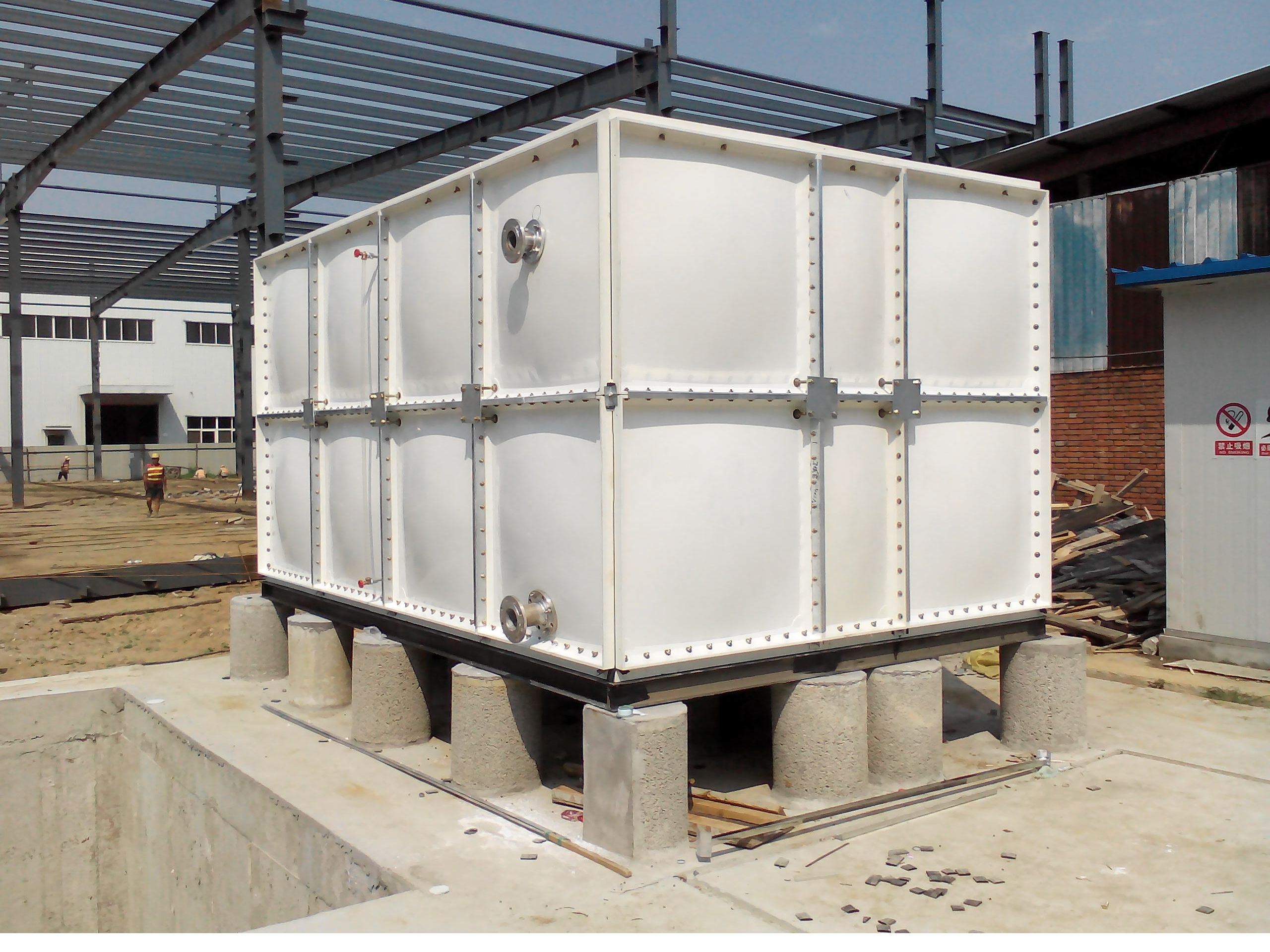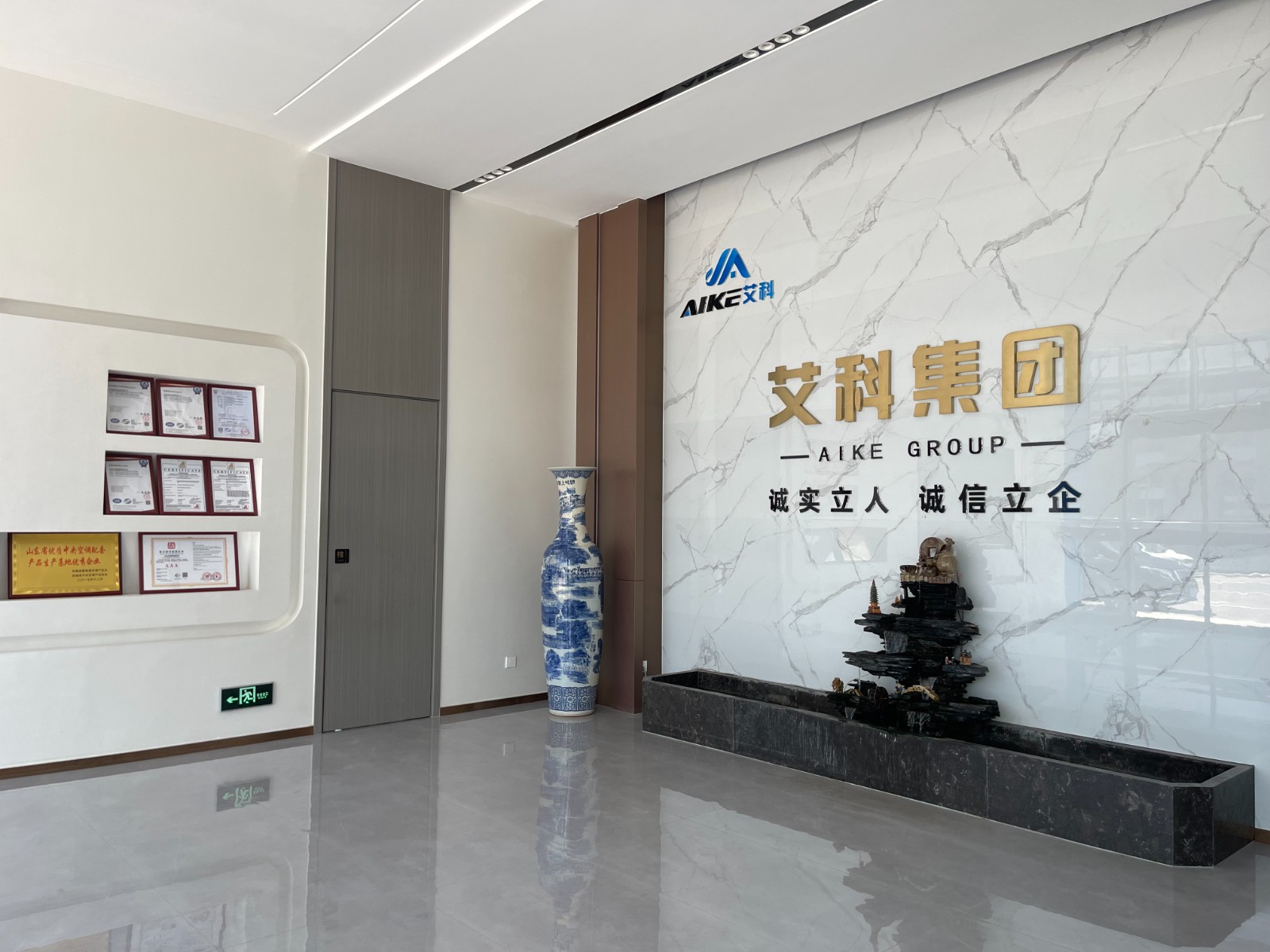Address: DeZhou,ShanDong,China | Phone: +86-18963078408 | E-mail: sales@aikegroupco.com

On December 11, 2023, Aike Group celebrated its ninth anniversary. All employees gathered in the workshop exhibition hall to review Aike Group’s nine-year growth process and look forward to a new blueprint for the group’s future development.

1. Initial data evaluation and design: Analyzing the material and its temperature is crucial for establishing the correct storage conditions, which encompass temperature, pressure, and the limits of their application. Key considerations include the corrosive properties of the medium, qualitative attributes, vapor pressure, and accessibility, all of which serve as fundamental components in the design phase.2. Raw materials: When selecting materials for chemical storage tanks, the corrosive nature of the medium plays a crucial role. Depending on the operational pressure and temperature, options such as enamel-coated containers, glass-lined tanks, or steel pressure vessels lined with rubber, porcelain, or PTFE can be utilized to enhance corrosion resistance.3. Selection of GRP storage tank configuration: Various configurations, including horizontal and vertical orientations, as well as different head types, are available for specific applications. The selection process involves choosing from a national series of containers that align with the operational parameters, including working pressure, temperature, medium, and volume.4. Calculation of total volume: Establish a plan for the overall volume of material to be stored.5. Determination of unit quantity and dimensions: The total volume of stored materials is divided by the calculated volume of a glass fiber reinforced plastic tank to ascertain the required number of tanks. The appropriate tank volume is determined based on the tank type, characteristics of the stored material, site dimensions, processing capabilities, and other relevant factors. This comprehensive evaluation leads to the identification of the suitable tank volume, which, when combined with the total storage volume, informs the final decision on the number of tanks needed.

How to Properly Maintain and Care for a Drinking Water Tank? A water tank is an essential component of our daily lives, serving the purpose of storing and keeping water at a suitable temperature. However, many individuals lack sufficient knowledge regarding the safe operation, storage, and maintenance of these tanks, which are crucial for the storage and supply of drinking water. Neglecting proper cleaning of the tank can lead to significant health issues over time. It is vital to understand the regulations surrounding the upkeep, operation, and maintenance of water tanks, as well as to master effective cleaning techniques. Ensuring good water quality in these tanks is paramount for public health. It is our responsibility to ensure that drinking water remains clean, making it essential to maintain the water quality of the tank. This article will present a variety of straightforward and effective strategies to assist you in preserving and maintaining the water quality of your tank. Storage Guidelines for Water Tanks1. Access to the drinking water tank, the associated room, and the pump room must be secured with locks. A log should be maintained for the key, documenting the name, date, time, and purpose of access, along with the approver's name and approval time. Any lost keys must be reported promptly, and locks should be replaced if necessary.2. All entries and exits to the drinking water tank, its room, and the pump room must be logged, and unauthorized personnel should not be allowed access to these areas without permission.3. Any maintenance performed on the drinking water tank, its room, and the pump room must be meticulously documented, including entry and exit times, details of the maintenance or cleaning performed, the names of the licensor and operator, and the reason for the maintenance. These records should be retained for a minimum of three years.4. A comprehensive inventory of the drinking water tank, its room, and the pump room, along with their equipment, must be maintained and updated at least once a year. This inventory should include details on cleaning, maintenance, testing, and inspections.5-It is necessary to forfulate an emergency water supply plan for life water and carry out work responsibility based on preparation and exercise. Guidelines for Maintaining a Drinking Water Tank–Operational Regulations1. Installation LocationSelect a well-lit, ventilated, and dry area for the installation of the drinking water tank. The surrounding environment should be free from corrosive gases, dust, and other contaminants. Avoid placing the tank near open flames or in high-temperature areas, and ensure it is not exposed to direct sunlight, tilted, or compressed. The installation site should be moisture-free, and the tank must be positioned horizontally and stably.2. Safety ValveA safety valve is essential to prevent the tank from over-pressurizing or rupturing. Regular inspections and cleaning of the safety valve are necessary to prevent blockages.3. Inlet PipeThe inlet pipe should connect securely to the public water supply or the original tap water line, ensuring there are no leaks. Additionally, an adjustable check valve and a filter screen should be installed to protect the interior of the tank from contamination.4. Blowdown PipeThe blowdown pipe must be installed separately or isolated from other water lines to prevent cross-contamination. Regular cleaning of the blowdown pipe is required to maintain unobstructed discharge.5. Pipe ConnectionsAll pipe connections to the water tank must be secure and reliable, free from looseness or leaks, to prevent water wastage and environmental pollution.6. Cleaning and Disinfection The water tank should be cleaned annually to maintain hygiene. Begin by emptying the tank, followed by a thorough cleaning to eliminate dirt and sediment.2. Guidelines for Maintaining a Drinking Water Tank – Maintenance Regulations1. Inspect the Operating ValveRegular checks and cleaning of the vent hole in the water tank's operating valve are necessary to ensure it remains unobstructed.1. Regular InspectionsIt is essential to conduct regular inspections of the water tank, focusing on the condition of pipes and valves. Timely cleaning and replacement of any damaged components are crucial to prevent blockages and ensure proper operation. Checking for seals and leaks in the water tank is vital for maintaining water quality. Poor sealing and leaks can lead to contamination of the water and waste of resources. Regularly inspect the tank for leaks, particularly at connections and valves. If any leaks are detected, promptly replace or repair the seals to ensure the tank remains well-sealed.2. Thermal Insulation CareThe water tank requires proper insulation to prevent excessive heat buildup. Regular inspections of the insulation materials are necessary to identify and replace any damaged sections, ensuring the effectiveness of the insulation.3. Ensuring Water Quality Regular cleaning of the water tank is fundamental to maintaining water quality. Accumulated dirt and bacteria can significantly degrade the water quality. To prevent this buildup, it is advisable to clean the tank every three to six months, depending on usage and water quality. Begin the cleaning process by turning off the water supply and draining the tank. When cleaning, it is important to wear protective gear, such as gloves and masks, to avoid contact with cleaning agents or contaminants. Use an appropriate cleaner, such as bleach or a specialized tank cleaner, following the manufacturer's instructions. After cleaning, thoroughly rinse the tank with clean water to eliminate any residual cleaning agents. Ensure that the tank is entirely empty before proceeding to refill it with water. Additionally, maintaining a clean environment around the tank is crucial for preserving water quality. The cleanliness of the area surrounding the tank directly impacts the water's quality. First, ensure that the vicinity is devoid of debris, litter, and potential contaminants. Such materials can infiltrate the water tank, leading to a deterioration in water quality. Next, focus on the sanitation of the area around the tank. Regularly remove dirt and dust to prevent these particles from entering the tank. It is also essential to maintain hygiene in the surrounding environment to prevent harmful substances from contaminating the water source. To effectively keep and maintain a drinking water tank, it is vital to prioritize the safe usage of the tank as part of water quality management. Consider the following recommendations to ensure optimal water quality during tank usage. First, refrain from storing or treating water with harmful chemicals, as certain substances can negatively impact water quality. Therefore, it is important to be mindful of where and how these substances are stored. Second, routinely inspect the discharge and intake pipes of the water tank to confirm that they are functioning properly and remain unobstructed. Additionally, be aware that water temperature can promote bacterial growth, which may compromise water quality. When managing heating and insulation, ensure that the water temperature remains within a suitable range. 1. Consistent water quality testing is essential for ensuring optimal conditions in water tanks. Such testing allows for a better understanding of water quality and the early detection of potential issues. You can either engage professional services for water quality assessments or utilize testing equipment for self-evaluation. By conducting regular tests, you can implement necessary actions promptly to maintain high water quality standards. To ensure the proper upkeep of a drinking water tank, it is crucial to prioritize water quality. Regular cleaning of the tank, inspecting for leaks and structural integrity, maintaining a clean surrounding environment, using the tank responsibly, and performing routine water quality tests are all effective strategies. These straightforward yet impactful practices not only safeguard our health but also contribute to the conservation of water resources.

When selecting a supplier for GRP (Glass Reinforced Plastic) water tanks, it is essential to consider several key factors to ensure you make an informed choice that meets your water storage requirements. The right supplier plays a significant role in providing a dependable and long-lasting water storage solution. This guide will outline the critical aspects to evaluate when choosing a GRP water tank supplier. We will discuss elements such as product quality, certifications, customization options, and customer support, all of which are vital in making a well-informed decision. Join us as we delve into the four important considerations that will help you find the ideal GRP water tank supplier for your specific needs.Here Are Four Key Considerations for GRP Water Tank Suppliers:Quality and Longevity:The primary aspect to assess is the quality and longevity of the GRP water tanks provided by the supplier. Ensure that the tanks are constructed from premium materials capable of enduring various environmental conditions. A robust water tank from a reputable manufacturer will have an extended lifespan, minimizing the frequency of replacements. Look for certifications or industry standards that affirm the quality of the tanks.Supplier Credibility:Investigate the credibility of the supplier by examining customer reviews, testimonials, and any available online feedback. A dependable supplier will typically have a strong history of delivering high-quality products and exceptional customer service. Additionally, requesting references from the supplier can provide direct insights from previous clients. A reliable supplier is essential for ensuring a seamless and stress-free purchasing experience.Customization Options:Every water storage requirement is unique, and it’s essential to choose a supplier that offers customization options. Consider your specific needs such as size, shape, and additional features. A supplier willing to work with you to customize the water tank according to your requirements ensures that you get a solution tailored to your needs. This flexibility is crucial, especially when dealing with space constraints or specific installation requirements.Cost And Warranty:While cost is an important factor, it should not be the sole determinant. Compare the prices offered by different suppliers, but also consider the quality and features provided. Additionally, inquire about the warranty offered on the GRP water tanks. A reputable supplier will stand by their product and provide a reasonable warranty, giving you peace of mind regarding the longevity and performance of the tank.In conclusion, selecting a GRP water tank supplier involves careful consideration of quality, supplier reputation, customization options, and cost. By paying attention to these factors, you can make an informed decision that ensures you get a reliable and durable water storage solution that meets your specific needs. Always take the time to research and communicate with potential suppliers to guarantee the best outcome for your water storage requirements.Customization Options: Each water storage need is distinct, making it vital to select a supplier that provides customization options. Assess your particular requirements, including dimensions, design, and any additional features. A supplier that collaborates with you to tailor the water tank to your specifications guarantees a solution that fits your needs perfectly. This adaptability is especially important when facing spatial limitations or unique installation conditions.Cost and Warranty: Although price is a significant consideration, it should not be the only factor influencing your decision. Evaluate the costs from various suppliers while also taking into account the quality and features they offer. Furthermore, it is important to ask about the warranty associated with the GRP water tanks. A trustworthy supplier will support their product with a solid warranty, ensuring you have confidence in the tank's durability and performance.In summary, choosing a GRP water tank supplier requires thorough evaluation of quality, the supplier's reputation, customization capabilities, and pricing. By focusing on these elements, you can make a well-informed choice that provides a dependable and long-lasting water storage solution tailored to your specific requirements. Always invest time in researching and engaging with potential suppliers to ensure the best results for your water storage needs.